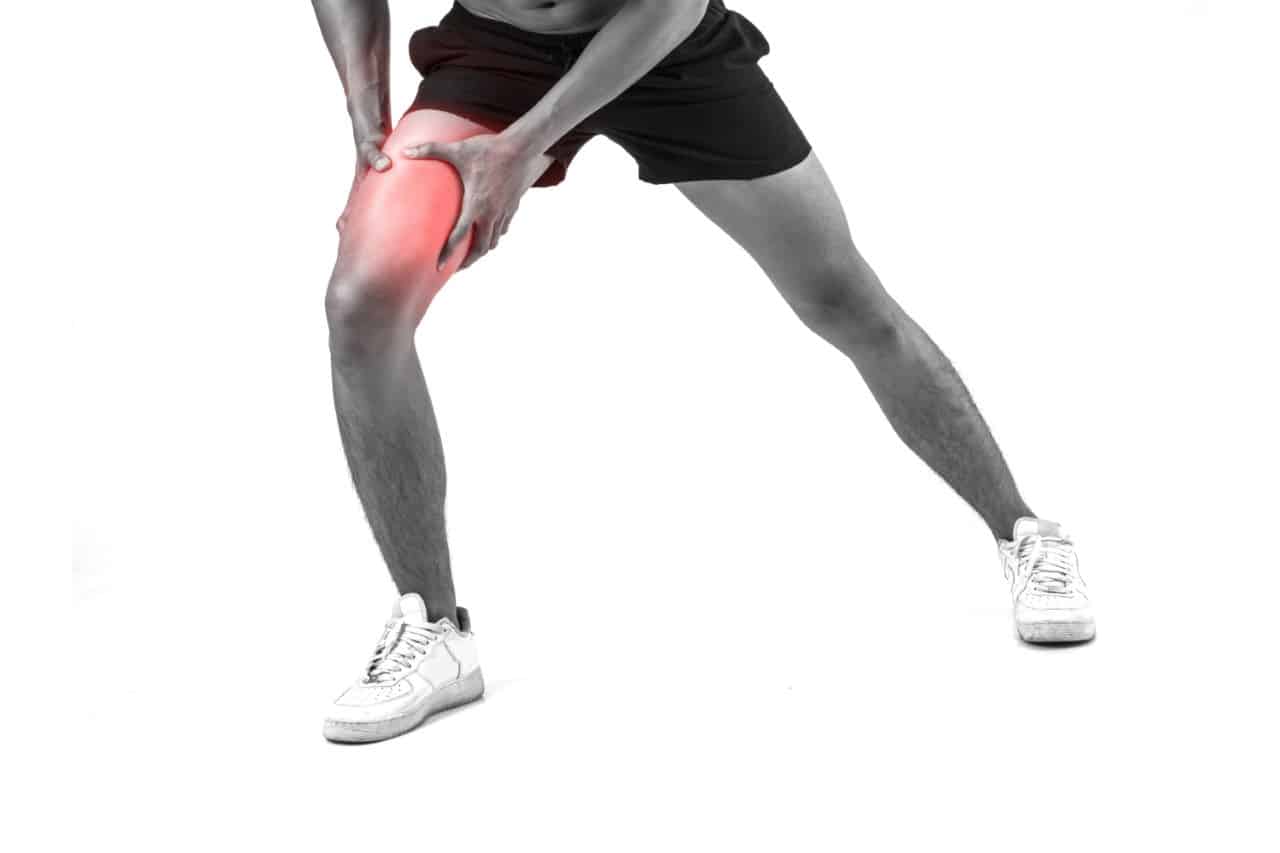Joint pain can be a real bummer, especially when it keeps you from doing the things you love. Whether it’s your knees or your back, joint pain is a problem that affects millions of people every day. We know how hard it can be to find information that’s both helpful and accurate on the internet. That’s why we’re here: to give you the facts you need so that you can make an informed decision. We’ll start by looking at what causes joint pain in the first place, and then we’ll tell you different ways to stop joint pain. Also, we will talk about how to get rid of it so continue reading.
Why does joint pain occur?
Joint pain is a common ailment that can be caused by a wide variety of conditions. An injury, degeneration of the joint, or an underlying medical condition can cause for joint pain. In some cases, joint pain is the result of aging, while in others, it may cause by autoimmune or infectious conditions. Here we will discuss some common reasons for joint pain.
Injury or Trauma
Injury or trauma is one of the most common causes of joint pain. Joints can be injured through direct or indirect force, such as falls, twists, or muscle strain. When a joint is injured, the ligaments and tendons that support the joint can be stretched or torn, resulting in pain.
Joint Diseases
Degenerative joint diseases, such as osteoarthritis and rheumatoid arthritis, can also cause joint pain. Osteoarthritis is a condition in which the cartilage inside the joint deteriorates over time. This can lead to bone-on-bone contact and pain. Rheumatoid arthritis is an autoimmune condition in which the body’s own immune system attacks the joint’s lining, leading to inflammation and pain.
Prevailing medical conditions
Medical conditions, such as gout, can also cause joint pain. Gout is a type of arthritis caused by an excessive buildup of uric acid in the joint. This can lead to inflammation and pain in the joint. Other medical conditions, such as lupus, fibromyalgia, and Lyme disease, can also cause joint pain.
Infections
Certain types of infections, such as bacterial and fungal infections, can also lead to joint pain. Bacterial infections, such as gonorrhea and staphylococcus, can cause joint pain, swelling, and redness. Fungal infections, such as athlete’s foot, can cause pain, stiffness, and inflammation.
Lack of exercise
In some cases, joint pain can be caused by a lack of exercise, obesity, or an unhealthy diet. When the joints are not used and strengthened regularly, the muscles and tendons that support them can become weaker, leading to pain and stiffness. Obesity can also put excessive pressure on the joints and lead to pain. Lastly, an unhealthy diet lacking essential vitamins and minerals can contribute to joint pain.
Joint pain can be debilitating and can interfere with everyday activities. If you are experiencing joint pain, it is important to speak with your doctor to determine the underlying cause. Treatment options vary depending on the cause but can include anti-inflammatory medications, physical therapy, or lifestyle changes such as eating a healthy diet and exercising regularly.
What are some of the common symptoms of joint pain?
Joint pain is a common complaint among people of all ages, from young to old. It can be caused by a wide variety of different conditions, from injury or overuse to arthritis and other degenerative diseases. Whatever the cause, joint pain can be a very uncomfortable and even debilitating experience.
Common symptoms of joint pain include:
Stiffness:
Joints that are stiff, particularly in the morning, can be a sign of joint pain. This stiffness can cause by arthritis, overuse, or injury.
Swelling:
Swelling around a joint can be a sign of joint pain, especially if accompanied by redness or warmth in the area. It can cause by inflammation, infection, or a tear in a ligament.
Pain:
This is the most common symptom of joint pain and can range in intensity from mild to severe. Pain can be localized to a specific area, or it can be more general and affect multiple joints.
Weakness:
Weakness in a joint can be caused by a variety of conditions, from arthritis to injury. It can affect the joint’s ability to move or bear weight.
Cracking/Clicking Noises:
Cracking or clicking noises when the joint moves may be a sign of joint pain. This can be caused by a tear in a ligament, cartilage damage, or arthritis.
Limited Range of Motion:
Joints that are unable to move through their full range of motion can be a sign of joint pain. This can be caused by injury, overuse, or a degenerative disease.
If you are experiencing any of these symptoms of joint pain, it’s important to speak to your doctor. Treatment for joint pain is available and depends on the cause and severity of the condition. Treatment options can range from physical therapy and medications to surgery.
Different ways to stop joint pain
Joint pain can be incredibly debilitating and can stop you from living life to the fullest. It can be caused by a variety of things, including arthritis, injury, overuse, and more. Whatever the cause, the pain can be so severe that it can limit your mobility and make everyday tasks difficult.
Fortunately, there are a variety of ways to help stop joint pain, depending on what’s causing it.
Here are some of the different methods you can use to ease joint pain:
Cold and Heat Therapy:
These are two of the most commonly used treatments for joint pain. Cold can help reduce the pain and inflammation caused by the injury or condition, while heat can help relax the muscles and reduce stiffness. Try different techniques to see which is most effective for you.
Exercise:
Exercise can help improve your joint health by strengthening the muscles and ligaments around the joint. Try low-impact exercises such as swimming, walking, and yoga to reduce pain and improve mobility.
Dietary Changes:
Paying attention to what you eat can also be hugely beneficial for joint health. Eating a balanced diet that includes plenty of fruits and vegetables, healthy fats, and lean proteins can help reduce inflammation and improve joint health.
Supplements:
Certain supplements can also help reduce joint pain. Glucosamine and chondroitin are two popular supplements that help protect and rebuild cartilage, while omega-3 fatty acids can help reduce inflammation.
Acupuncture:
Acupuncture is a traditional Chinese medical technique that involves inserting needles into specific points in your body to stimulate energy flow. It can help reduce inflammation and joint pain and improve the range of motion.
Massage:
Massage can also be an effective way to reduce joint pain. It helps relax the muscles around the joint and increase blood flow and circulation, which can in turn help reduce pain and inflammation.
Medication:
In some cases, medication may be necessary to reduce joint pain. Anti-inflammatory medications such as ibuprofen or naproxen can use to reduce swelling and pain, while stronger medications such as corticosteroids may prescribe for more severe cases.
There are a variety of ways to manage joint pain. It’s important to talk to your doctor to find out what’s causing your pain and determine the best course of treatment. With the right combination of treatments and lifestyle changes, you can reduce joint pain and get back to living life to the fullest.
Conclusion
We hope this article has helped you learn more about joint pain, its types, and the best ways to stop joint pain. Remember that there are many different ways to prevent or treat joint pain, so if one method doesn’t work for you then don’t give up! There are plenty of other treatments available that might be just right for your situation.
FAQs
Q: How long does joint pain last?
A: Joint pain can last anywhere from a few days to several months or years. It’s important to talk with your doctor about your specific situation so they can help you determine how long the pain will last and what treatment options are best for you.
Q: Is joint pain a sign of something serious?
A: Joint pain can be a sign of many different things, including arthritis and injury. It’s important to talk with your doctor about the specific type of pain you’re experiencing so they can help determine what treatment options are best for you.
Q: How do I know if my child has joint pain?
A: If your child is displaying signs like limping or not using an injured limb, it’s important that you take them to see their doctor as soon as possible.











